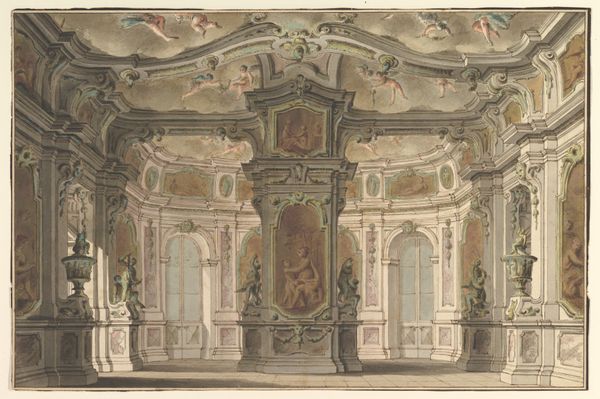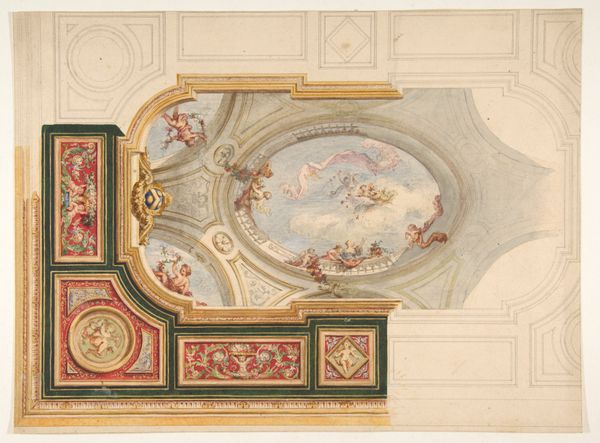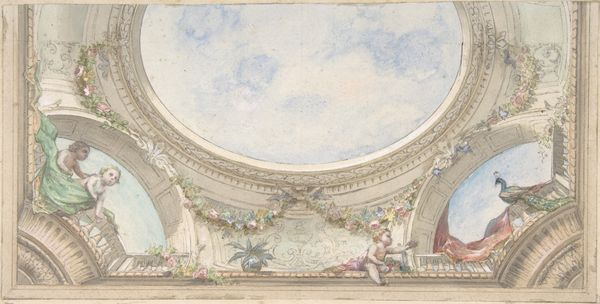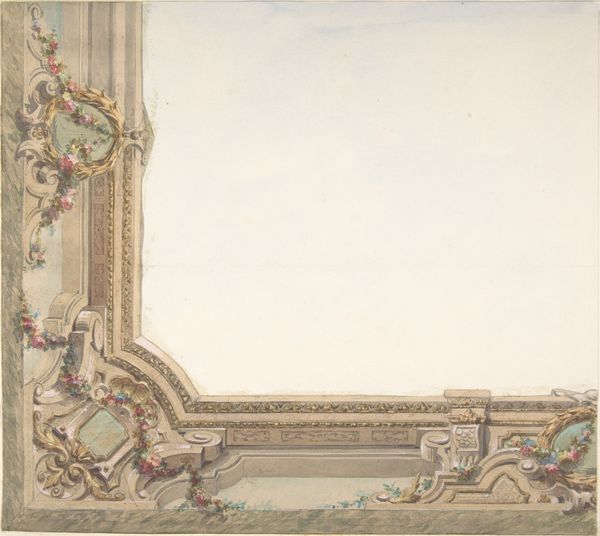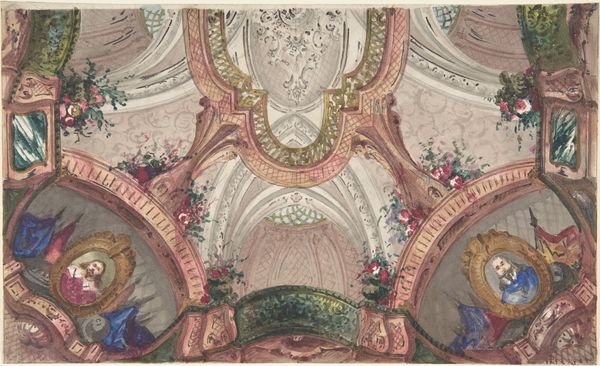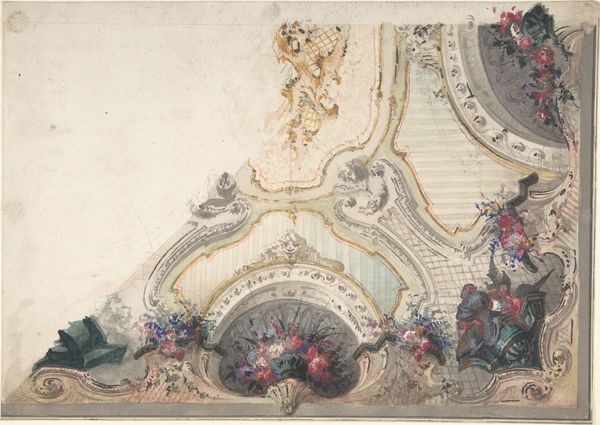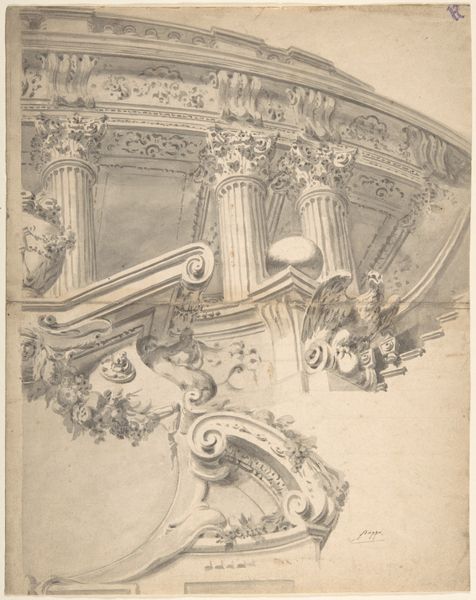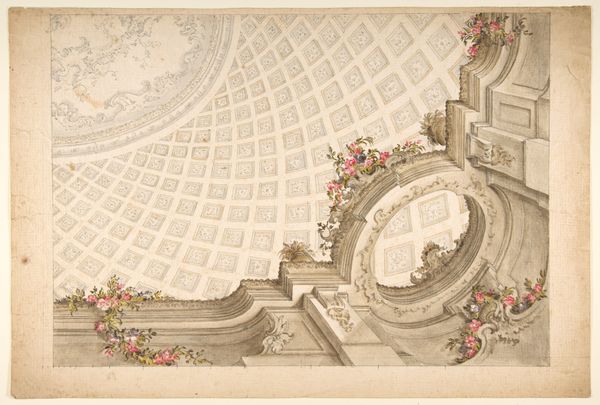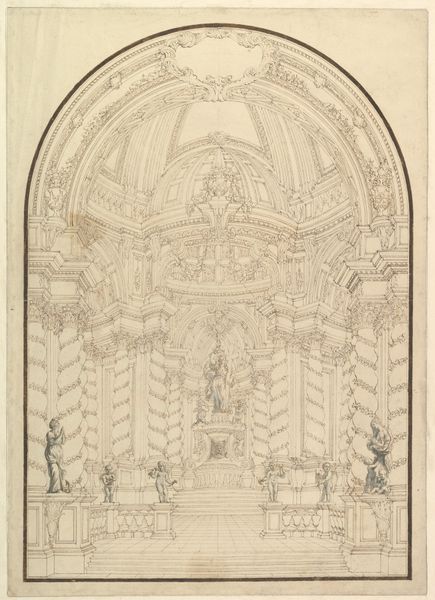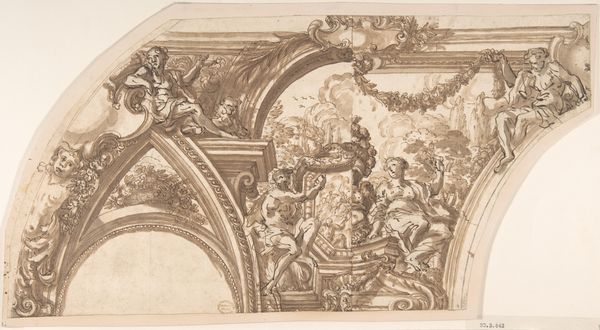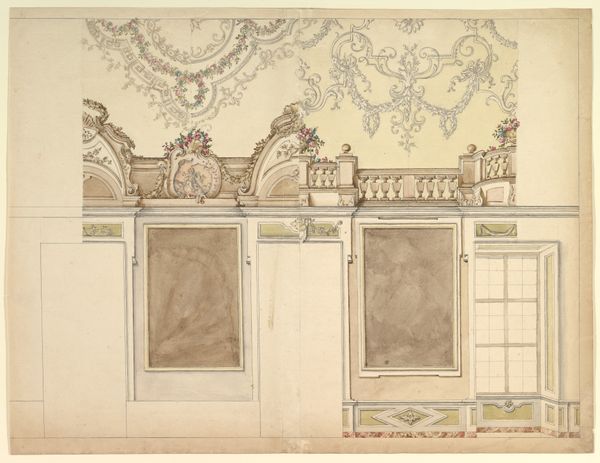
Dimensions: 6 15/16 x 11 3/4 in. (17.7 x 29.8 cm)
Copyright: Public Domain
Editor: This watercolor piece, "Design for a Ceiling" from around 1761-1836, attributed to Faustino Trebbi, gives such a sense of lightness, with its airy architectural details and cherubic figures. What do you see in this design, especially considering its historical moment? Curator: What strikes me is how this seemingly innocuous ceiling design embodies the complex power dynamics of the Baroque era. It presents an idealized vision of luxury and divine right, but what stories are silenced by this grandiosity? Consider who this opulence was intended to impress and at whose expense it was built. Editor: So, beyond the cherubs and decorative elements, you're pointing towards a critique of the social structure reflected in the architecture? Curator: Precisely. The fresco, even in its draft stage, would have been part of spaces enjoyed by the elite, reinforcing their power. Look at the ways space is organized – who gets to look up and admire this ‘divine’ spectacle? The design creates a visual hierarchy, which echoes a very real social hierarchy. How do we reconcile the beauty with the social implications of such art? Editor: That’s a powerful point. I hadn’t considered the political implications inherent in the artistic expression itself. It makes me think about how art can perpetuate ideologies, even unconsciously. Curator: Indeed. And understanding those connections is key to unpacking art’s role in both reflecting and shaping society. What if we considered Baroque art not just as decoration but as a language of power? Editor: I'm leaving with a totally different view. Thank you for highlighting those power dynamics. Curator: It's in questioning these visual statements that we can start unraveling the complexities of history and art.
Comments
No comments
Be the first to comment and join the conversation on the ultimate creative platform.
